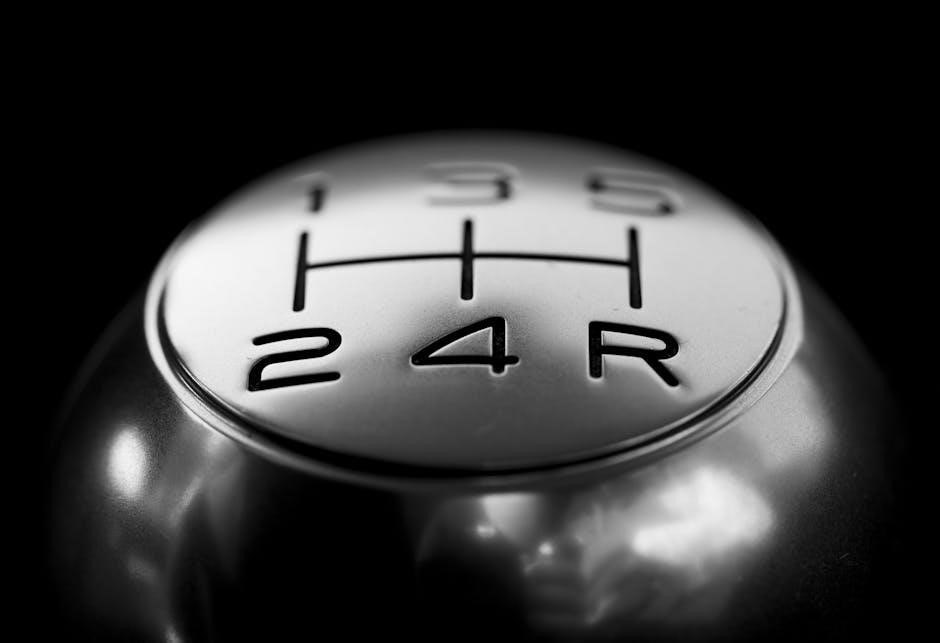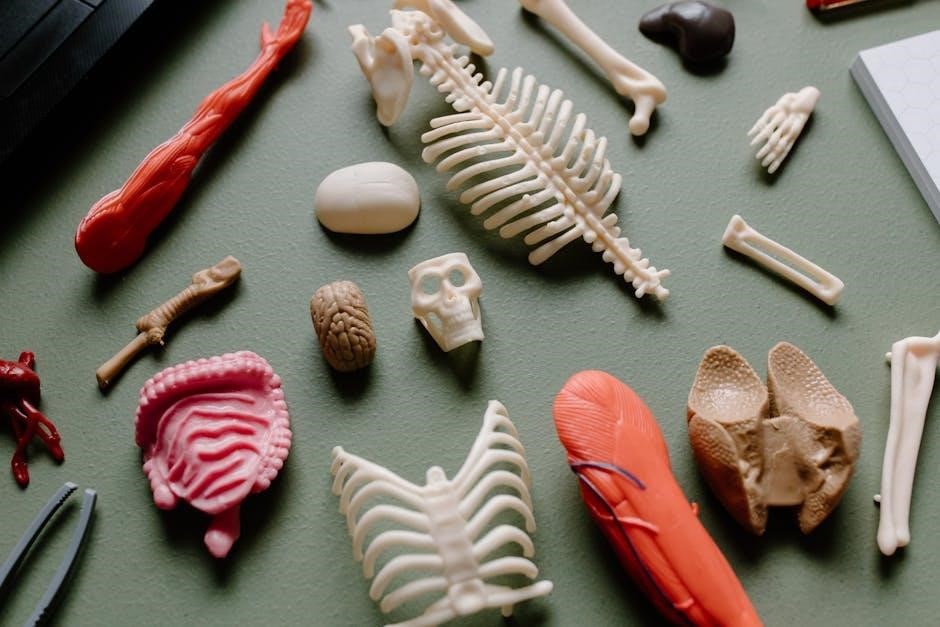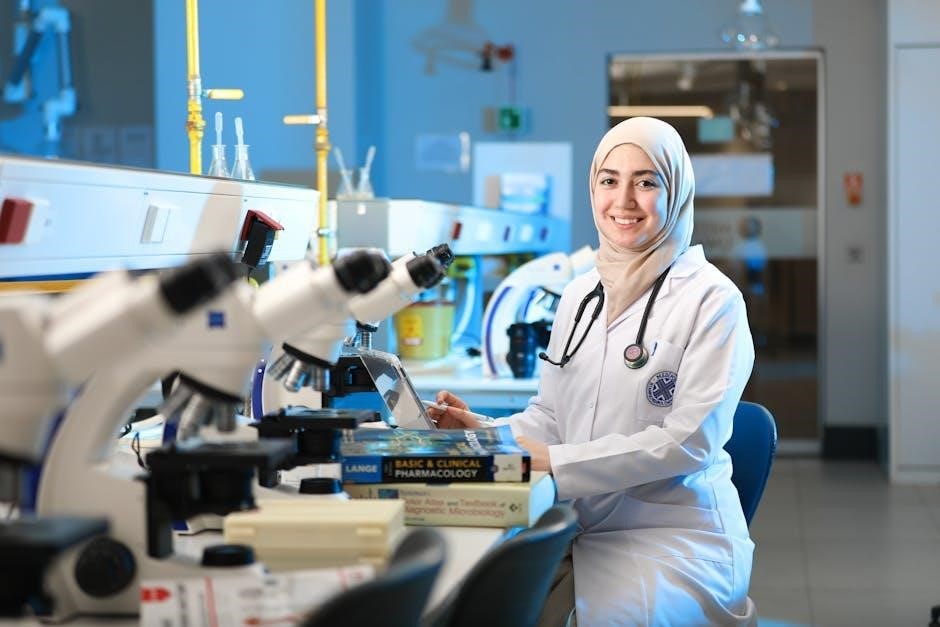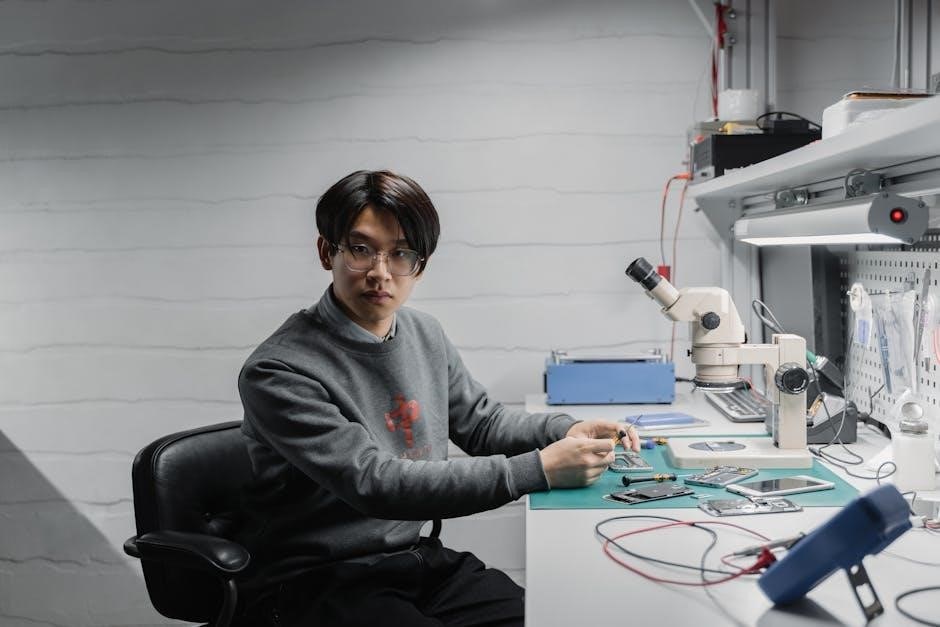Eyepiece (Ocular Lens)
The eyepiece, or ocular lens, magnifies the image produced by the objective lens, allowing clear observation of the specimen under the microscope.
1.1 Function of the Eyepiece
The eyepiece, or ocular lens, serves as the primary lens through which the user observes the magnified image of the specimen. It works in conjunction with the objective lens to further enlarge the image, providing a clearer and more detailed view. This essential component allows for precise observation and study of microscopic structures, enhancing the overall microscopy experience.
1.2 Magnification Power of the Eyepiece
The eyepiece typically has a fixed magnification power, commonly 10X or 15X, which multiplies the magnification provided by the objective lens. This fixed power ensures a standardized viewing experience, allowing users to achieve consistent and reliable magnification levels when examining specimens under the microscope;
1.3 Types of Eyepieces (Monocular, Binocular, etc.)
Eyepieces come in monocular and binocular types. Monocular eyepieces are simpler and more common, suitable for most applications. Binocular eyepieces offer dual viewing, reducing eye strain and providing a more comfortable experience, especially for extended use. Both types ensure clear and precise specimen observation under the microscope.

Objective Lenses
Objective lenses are positioned near the specimen, providing the initial magnification and working in conjunction with the eyepiece to deliver a clear, enlarged image under the microscope.
2.1 Role of Objective Lenses in Magnification
Objective lenses play a crucial role in magnification by focusing light from the specimen, creating a real image that the eyepiece further enlarges. They are essential for capturing the initial details of the sample under the microscope, ensuring clarity and precision in observation. Their magnification power varies, with low and high power options available for different imaging needs.
2.2 Different Types of Objective Lenses (Low Power, High Power)
Objective lenses come in varying magnifications, such as low power (e.g., 4x, 10x) and high power (e;g., 40x, 100x). Low-power lenses provide a wider field of view for general specimen observation, while high-power lenses offer greater detail and are used for closer examination of smaller structures, enhancing the overall imaging experience in microscopy.
2.3 How Objective Lenses Work with the Eyepiece
Objective lenses work with the eyepiece to enhance magnification by capturing light from the specimen and forming an intermediate image. The eyepiece then magnifies this image further, creating a compounded effect. Together, they provide a higher magnification power, enabling detailed observation of the specimen under the microscope.

Stage and Stage Clips
The stage holds the specimen in place under the microscope, while stage clips secure the slide, ensuring the specimen remains stable during observation.
3.1 Purpose of the Stage
The stage serves as a platform to hold the specimen slide securely under the microscope objective lens. Its flat surface ensures the sample remains steady, allowing precise focus adjustment for clear observation. Proper positioning of the specimen on the stage is crucial for effective microscopy, enabling accurate and detailed examination of the sample.
3.2 Function of Stage Clips
Stage clips securely hold the specimen slide in place on the microscope stage, ensuring stability and proper alignment under the objective lens. This prevents movement of the sample during observation, allowing for clear and focused viewing. The clips are adjustable to accommodate different slide sizes, ensuring the specimen remains centered and accessible for detailed examination.

Coarse and Fine Focus Adjustments
Coarse and fine focus adjustments enable precise control over the microscope’s focus, ensuring clear and sharp images of the specimen under observation.
4.1 Importance of Focus Adjustments
Coarse and fine focus adjustments are crucial for achieving clear and sharp images of specimens. They allow users to precisely align the image, ensuring optimal visibility and accuracy in observations. Proper focusing enhances the overall microscopy experience, enabling detailed study of microscopic structures. These adjustments are essential for obtaining high-quality images, making them indispensable in scientific and educational settings.
4.2 Difference Between Coarse and Fine Focus
The coarse focus adjustment is used to roughly position the specimen image, bringing it close to focus quickly. In contrast, the fine focus adjustment provides precise control, refining the image for clarity and sharpness. Together, they ensure accurate and detailed observation under the microscope, with coarse focus setting the initial position and fine focus perfecting the view. This dual mechanism optimizes microscopy efficiency.

Light Source and Diaphragm
The light source provides illumination for observing specimens, while the diaphragm regulates light intensity, ensuring optimal brightness and clarity for precise microscopic observations.
5.1 Role of the Light Source in Microscopy
The light source provides illumination, essential for viewing specimens under the microscope. It works with the diaphragm to regulate brightness, ensuring optimal clarity and focus. Proper lighting enhances image quality, allowing detailed observation of microscopic structures in various techniques like brightfield or fluorescence microscopy.
5.2 Function of the Diaphragm
The diaphragm regulates the amount of light entering the microscope by adjusting the aperture. It optimizes illumination for clear specimen visibility, preventing overexposure. Proper diaphragm use enhances image contrast and clarity, essential for accurate observations in microscopy, ensuring detailed and precise viewing of specimens under various lighting conditions; It works in conjunction with the light source for optimal results.
Arm and Body Tube
The arm provides structural support and stability, while the body tube connects the eyepiece to the objective lenses, ensuring proper alignment and durability of the microscope.
6.1 Structure and Stability Provided by the Arm
The arm of the microscope serves as a sturdy structural component, connecting the body tube to the base. Its robust design ensures stability, preventing movement or vibration during use. Constructed from durable materials, the arm supports the entire optical system, allowing smooth adjustments while maintaining alignment and balance. This stability is crucial for clear and precise observations under magnification.
6.2 Role of the Body Tube
The body tube houses the eyepiece and connects to the objective lenses via the revolving nosepiece. It maintains proper alignment of the optical components, ensuring a focused and clear image. The body tube also supports the coarse and fine focus knobs, allowing precise adjustments for optimal specimen viewing. Its design enhances the overall functionality of the microscope by integrating key optical and mechanical systems seamlessly.
Revolving Nosepiece
The revolving nosepiece holds multiple objective lenses, enabling quick and easy switching between different magnifications without removing the lenses, enhancing efficiency in microscopic observations.
7.1 Function of the Revolving Nosepiece
The revolving nosepiece securely holds multiple objective lenses, allowing quick and precise switching between different magnifications. It rotates smoothly, ensuring only one lens is in the light path at a time, and often features click-stops for easy alignment. This mechanism enhances efficiency in microscopic observations by making lens changes swift and maintaining image clarity.
7.2 How It Facilitates Objective Lens Switching
The revolving nosepiece simplifies objective lens switching by enabling quick rotation to the desired lens. This mechanism ensures smooth transitions between different magnifications without disrupting the focus, saving time and maintaining specimen orientation. It allows users to select the appropriate lens efficiently, enhancing the overall microscopy experience with precision and ease of use.

Base of the Microscope
The base of the microscope provides stability and support, ensuring the instrument remains steady during use. It holds the light source and other components securely.
8.1 Importance of the Base for Stability
The base of the microscope is crucial for stability, ensuring the instrument remains steady and balanced during use. It prevents movement or wobbling, which could distort the image or make focusing difficult. A stable base is essential for accurate observations, especially at higher magnifications, where even slight movements can affect image clarity and overall performance.
8.2 Components Attached to the Base
The base of the microscope is where several essential components are attached. These include the light source, which illuminates the specimen, and the diaphragm, which regulates the intensity of the light. Additionally, the stage, where the specimen is placed, and the stage clips, which hold the slides securely in position, are also mounted on the base. These components work together to ensure proper illumination and specimen handling, crucial for effective microscopy.
Overall Functionality of the Microscope
The microscope works by combining magnification, illumination, and focus to produce a clear image of tiny specimens, enabling detailed observation and study in various scientific fields.
9.1 How All Parts Work Together
The eyepiece and objective lenses collaborate to magnify specimens, while the stage and clips secure the slide. Coarse and fine focus adjustments clarify the image, and the light source with the diaphragm optimize illumination. The arm and body tube provide structural support, and the revolving nosepiece allows objective lens switching. Together, these components ensure precise, clear, and efficient microscopy for detailed specimen observation.
9.2 Enhancing Microscopy Experience Through Proper Use of Parts
Properly adjusting the eyepiece and objective lenses ensures optimal magnification. Using the correct light source and diaphragm settings enhances image clarity. Regular maintenance of microscope parts, like cleaning lenses and securing the stage, improves performance. Understanding each component’s role and function allows for precise adjustments, leading to a more efficient and effective microscopy experience for users at all skill levels.
